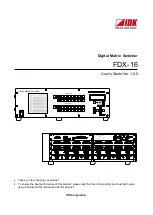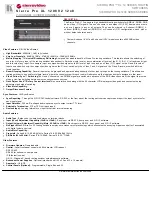
47
ipv4-add1/ipv4-add2
: IPv4 address of the next hop. The
ipv4-add2
argument backs up
ipv4-add1
. If
redirecting traffic to
ipv4-add1
fails, the device redirects the traffic to
ipv4-add2
.
ipv6-add1/ipv6-add2
: IPv6 address of the next hop. The
ipv6-add2
argument backs up
ipv6-add1
. If
redirecting traffic to
ipv6-add1
fails, the device redirects the traffic to
ipv6-add2
. If the specified next hop
IPv6 address is a link-local address, you must also specify the outgoing interface. Otherwise, you do not
need to specify the outgoing interface.
fail-action
{
discard
|
forward
}: Specifies the action to be performed for a packet whose next hop
address does not exist.
•
discard
: Drops the packet.
•
forward
: Forwards the packet.
Description
Use the
redirect
command to configure a traffic redirecting action in the traffic behavior.
Use the
undo redirect
command to delete the traffic redirecting action.
CAUTION:
•
Redirecting traffic to CPU, redirecting traffic to an interface, and redirecting traffic to the next hop are
mutually exclusive with each other in the same traffic behavior.
•
The default option for the
fail-action
is
forward
.
Examples
# Configure redirecting traffic to GigabitEthernet 1/0/1 in traffic behavior
database
.
<Sysname> system-view
[Sysname] traffic behavior database
[Sysname-behavior-database] redirect interface gigabitethernet1/0/1
remark dot1p
Syntax
remark
{
[
green
|
red
|
yellow
]
dot1p
8021p
|
dot1p
customer-dot1p-trust
}
undo remark
[
green
|
red
|
yellow
]
dot1p
View
Traffic behavior view
Default level
2: System level
Parameters
green
: Specifies green packets.
red
: Specifies red packets.
yellow
: Specifies yellow packets.
8021p
: 802.1p priority to be marked for packets, which ranges from 0 to 7.
customer-dot1p-trust
: Copies the 802.1p priority value in the inner VLAN tag to the outer VLAN tag after
the QoS policy is applied to a port. This keyword does not take effect on single-tagged packets.
















































